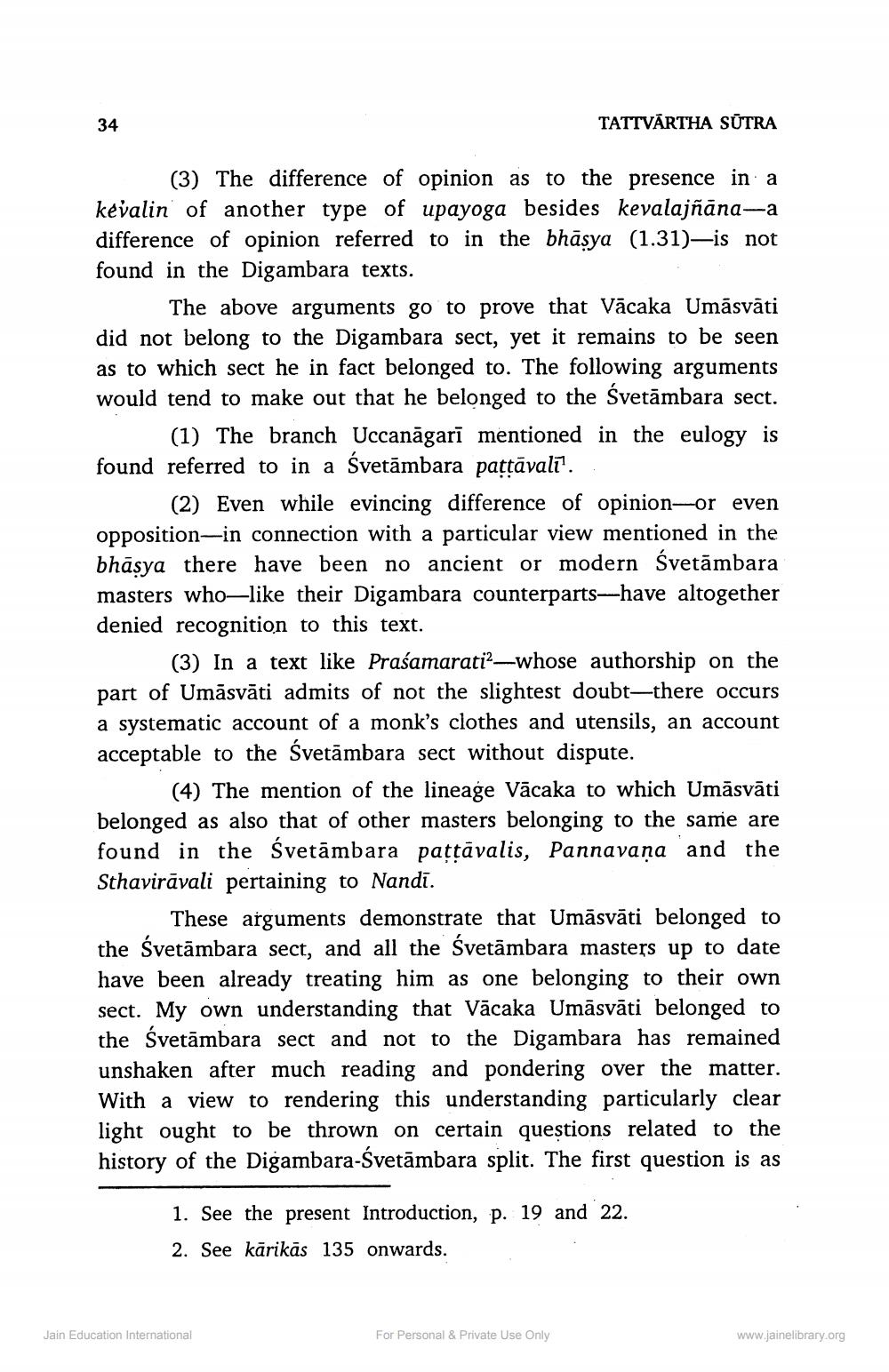________________
34
TATTVĀRTHA SŪTRA
(3) The difference of opinion as to the presence in a kevalin of another type of upayoga besides kevalajñāna-a difference of opinion referred to in the bhāsya (1.31)—is not found in the Digambara texts.
The above arguments go to prove that Vācaka Umāsvāti did not belong to the Digambara sect, yet it remains to be seen as to which sect he in fact belonged to. The following arguments would tend to make out that he belonged to the Svetāmbara sect.
(1) The branch Uccanāgarī mentioned in the eulogy is found referred to in a svetāmbara pattāvali"..
(2) Even while evincing difference of opinion-or even opposition-in connection with a particular view mentioned in the bhāsya there have been no ancient or modern śvetāmbara masters who—like their Digambara counterparts—have altogether denied recognition to this text.
(3) In a text like Praśamarati —whose authorship on the part of Umāsvāti admits of not the slightest doubt-there occurs a systematic account of a monk's clothes and utensils, an account acceptable to the śvetāmbara sect without dispute.
(4) The mention of the lineage Vācaka to which Umāsvāti belonged as also that of other masters belonging to the same are found in the śvetāmbara pattāvalis, Pannavaņa and the Sthavirāvali pertaining to Nandi.
These arguments demonstrate that Umāsvāti belonged to the Svetāmbara sect, and all the Svetāmbara masters up to date have been already treating him as one belonging to their own sect. My own understanding that Vācaka Umāsvāti belonged to the “vetāmbara sect and not to the Digambara has remained unshaken after much reading and pondering over the matter. With a view to rendering this understanding particularly clear light ought to be thrown on certain questions related to the history of the Digambara-Svetāmbara split. The first question is as
1. See the present Introduction, p. 19 and 22. 2. See kārikās 135 onwards.
Jain Education International
For Personal & Private Use Only
www.jainelibrary.org




